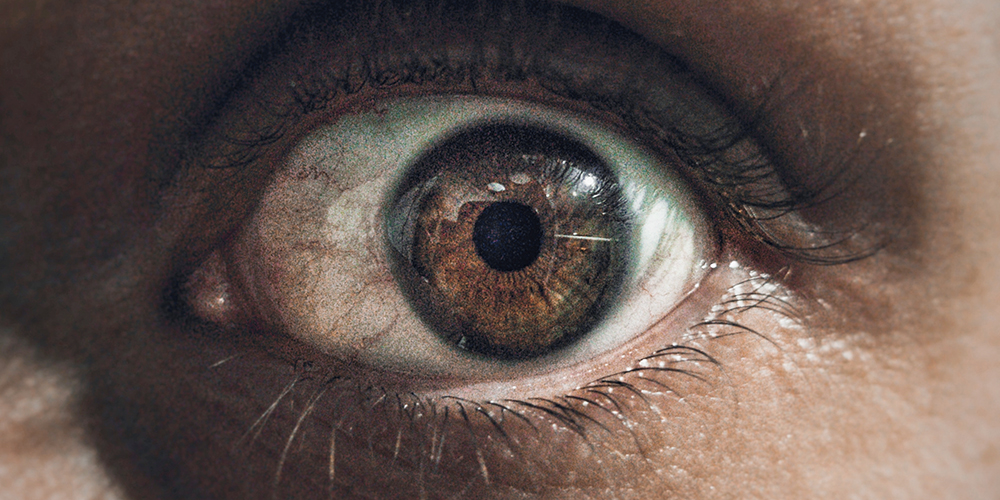Stronger than fear.
Text: Niklas Bienbeck
It is understandable to be afraid of a dangerous animal or a risky situation, but if this feeling manifests in moments where there is no clear and present danger, fear can become its own burden. Ways that can help.
Your pulse races, you tremble and become flushed. In extreme cases, you may have trouble breathing or even lose consciousness. “People with generalized anxiety disorders or panic attacks are often unable to identify their feelings – they surrender to them completely,” explains psychologist Anja Zimmer. Specific phobias can trigger similar symptoms, but these are directed toward a concrete object or situation. Those affected generally know that their fear is irrational, yet they avoid these situations and withdraw from life. The core of any phobia is the fear of losing control.
The origins of the phobia
“Traumatic experiences or observations frequently result in the development of a phobia. We are particularly susceptible in early childhood. Children observe patterns of anxious behavior in their parents or other guardians,” says Zimmer. But long periods of sustained stress can also increase the risk of developing a phobia. Genetic predisposition may also play a role in the inheritance of phobias. Research in this area is ongoing.
From social anxiety to specific phobias
Fears may also be explicitly related to social situations. Those with social anxiety disorder are afraid of embarrassing themselves when they are the center of attention. This turns public presentations and examinations as well as private parties and events into difficult, challenging situations.
Agoraphobia is related to social anxiety. People with this phobia fear specific places or situations, such as vast, open spaces or crowds of people. “Those affected fear that they won’t be able to escape in time in the event of an emergency, or that help will be too slow to arrive,” says Zimmer.
Agoraphobia often manifests together with panic attacks, which can be of varying intensity. Consequently, one can develop a “fear of fear” that may cause an attempt to avoid such situations whenever possible. Fear of the next panic attack can generate a vicious cycle.
Specific phobias are tied to concrete objects or situations. These include the fear of certain animals, natural disasters or situations that appear dangerous, such as looking down from high up. “Arachnophobia” (fear of spiders) and “ophidiophobia” (fear of snakes) number among the best-known animal-related phobias. Common situational phobias include the fear of heights (“acrophobia”) or fear of confined spaces (“claustrophobia”). Fear of visiting the dentist (“dentophobia”) and fear of flying (“aviophobia”) are also commonly reported phobias.
Five strategies for overcoming fear
1 Examining fears
In many cases, people are able to influence their own fear responses. Catastrophizing can put the body in a state of alarm. So, those affected should try to identify the true source of their fears and evaluate how realistic those fears actually are. This can help relativize anxieties and mitigate the physical reactions they provoke.
2 Practicing calmness
Protracted fear of a situation or object can cause people with anxiety to develop a “fear of fear” which exacerbates their anxiety disorder. Preventative meditation, mindfulness and relaxation techniques can help people recognize and accept their symptoms and thoughts and cultivate calmer responses to their fears.
3 Movement
Regular exercise can reduce the body’s stress responses in the long term. Movement helps break down the hormones secreted during the fear response and releases endorphins.
4 Exposure
If the strategies listed above are unsuccessful, exposure therapy is often the only way to treat both specific phobias and social anxiety. It may also be part of the treatment for generalized anxiety, panic attacks or agoraphobia. Those affected work together with professionals to actively confront their fears in the places or situations that tend to provoke them. This way, they can learn that the situation or object in question is, in fact, harmless and boost their confidence at the same time. In the case of severe anxieties, it is recommended to slowly acclimate to the stress by gradually increasing the intensity of the exposure. In the future, new smartphone apps like the one developed by Anja Zimmer could offer people an easily accessible therapy option for treating specific phobias and social anxiety. There are already numerous apps on the market for other anxiety disorders, however, few of them are based on solid science or have been adequately tested.
5 Medication
Many anxiety disorders cannot be treated effectively without the use of medication. Most patients are prescribed antidepressants, but these have side effects. That is why, in recent years, researchers like Professor Undine Lang at the University Psychiatric Clinics (UPK) Basel have been studying new forms of therapy, such as treatments employing psychedelic substances, such as LSD.
“There are many different treatment options: Alongside long-term therapies, there are also numerous short-term alternatives that are very effective. The common factor is that they can all be very challenging. Apps are a great way for affected people to help themselves, particularly in the case of specific phobias, and they can always be combined with professional therapies,” summarizes Anja Zimmer.
Anja Zimmer is a psychologist and doctoral researcher at the Faculty of Psychology of the University of Basel. Her research in the Division of Cognitive Neuroscience focuses on the use of virtual and augmented reality apps to treat phobias.
More articles in the current issue of UNI NOVA.

